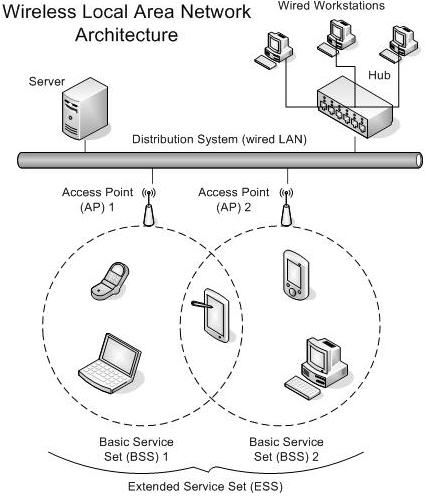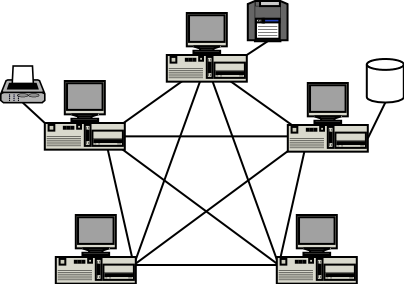Find out
LAN (Local Area Network)
A computer network that covers a small local area such as an office, a group of buildings etc.; in other words, computers located a few metres or kilometres from each other. Some major properties of a LAN are: no use of public telecommunication channels between network components, high data transmission rates, the possibility of protecting the local network from other networks, the capability of controlling inbound and outbound traffic centrally (e.g. by means of a firewall).
WAN (Wide Area Network)
A computer network that covers a wider geographical area than LANs. In fact, WANs connect LANs together, so that computer users in one location can communicate with users in a distant location. Furthermore, WANs can be private — built, for example, for a particular organization — or public, providing connections from a company’s LAN to the Internet. The most common example of a WAN is the Internet.
VPN (Virtual Private Network)
A computer network that allows secure communication over unsecured networks, e.g. by making use of encryption. It also enables the use of resources (shares, network drives, printers, etc.) that otherwise would be accessible only within an organisation's internal network.
Intranet
Private, internal networks that use Internet technologies – such as the TCP/IP protocol – to share data (documents, databases, translation memories, term bases) or programs and services installed on a server, say, so that they are accessible to other computers. Other examples of Intranet services are helpdesk systems and internal websites.
Internet
A worldwide, publicly accessible system of interconnected computer networks that transmit data by using standardised technologies. The Internet can be understood as "a network of networks". It consists of millions of smaller domestic, academic, business, and government networks, which together carry a vast range of information and services, such as email, online chat, file transfer, and web pages.
Why is this information important for translators and translation teachers?
Today most translators work within different kinds of networks: Internet, intranets or LANs, and VPNs. Many clients use these networks to communicate with and deliver translation orders to freelance translators. Therefore, it is important that translators are aware of the different types of networks, their properties and functionalities, and their advantages and disadvantages.
Furthermore, nearly all recent developments of CAT tools are based on or at least support client/server technologies (see question 6) that permit simultaneous access to resources such as central translation memories and terminology data bases.





